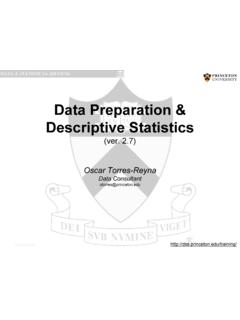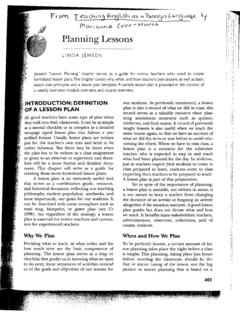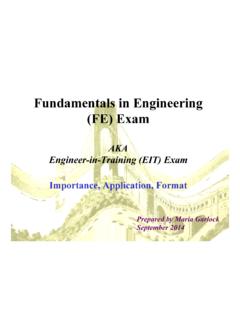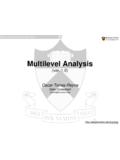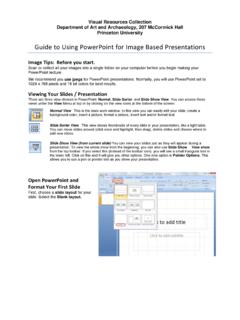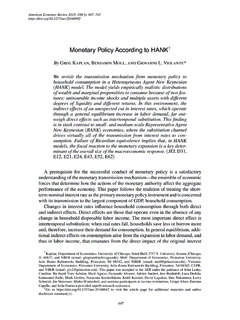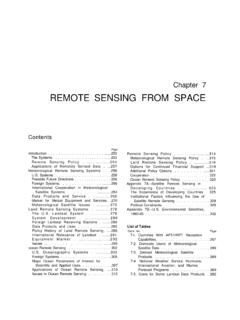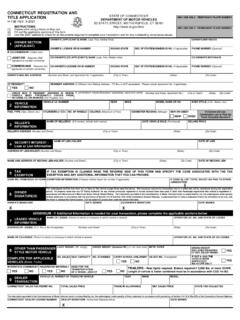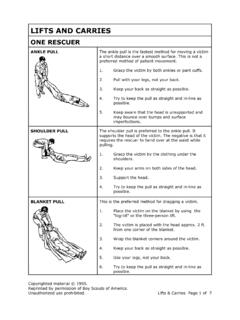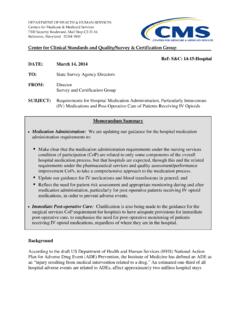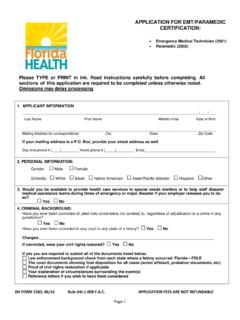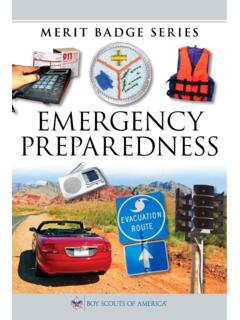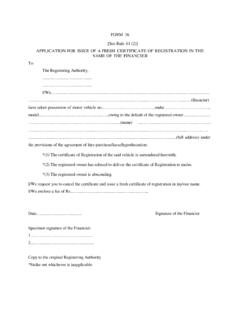Transcription of FE & EIT CERTIFICATION: A GUIDE
1 FE & EIT CERTIFICATION: A GUIDE . This handout is intended to be a supplement to and State Licensing Board websites. It includes FAQs that aren't easily accessible from the primary sources and some test prep information from previous students. Please verify with NCEES and your State Licensing Board for the most up-to-date information. STEPS TO REGISTERING FOR THE FE & APPLYING FOR EIT. Here's the general sequence for FE & EIT registration. For more information, see the FAQ. 1. Check state requirements to register for exam on (for the state where you want certification). Some states require paperwork beforehand, so do this early! 2. Pay for the exam 3. Receive authorization email from NCEES to schedule your exam (up to 48 hours after step 2).
2 4. Schedule the exam. The soonest you can schedule it is 24 hours before the exam date; the latest is 12 months after you paid for the exam. It's recommended to schedule 1-2 months ahead of your test date (depending on your flexibility). 5. Take the FE exam and pass! 6. Apply to the state board to receive your EIT certificate. You will need to have passed the exam and received your ABET-accredited degree. 7. Gain experience and take the PE exam. Things can get a bit scrambled here. Depending on state, experience is considered at different stages in the process, and experience before/after certification may be considered differently. See FAQ for details. 8. Apply to become a PE. States generally require 3-5 years of relevant experience for this.
3 GLOSSARY. The certification/licensure process can be confusing due to the plethora of titles and terms involved. Here is a who's who (and what's what) of engineering licensure. ENTITIES INVOLVED: NCEES Pearson VUE State Licensing Board The testing authority. They The company that runs the The folks who say, congrats, schedule and write the exams. testing locations. Contact you are officially an engineer! . Contact them regarding exam them regarding the test center, Contact them regarding registration and scoring. in case of power outages. qualifications for licensure. ENGINEERING LICENSURE TERMS: FE: Fundamentals of EIT/EI: Engineer-in- PE: Professional Engineering Training/Engineer Intern Engineer[ing]. A prerequisite to becoming an (slightly different terminology Refers to both the exam and EIT and PE.)
4 It's generally depending on state) license for being an engineer. best to take this junior/senior This is certification that This is state-based and you year of college, state shows your partial committal will need to be licensed in requirements permitting. to becoming an engineer. every state where you work. All information is sourced from NCEES and a few representative state boards except in the Exam Details and Tips' section. Last updated July 2016. FE CIVIL EXAM DETAILS AND TIPS. Note that year-round availability does not mean everyday availability to take the exam! The Pearson VUE testing centers are not open daily most have availability 5-10 days per month. There isn't a strict passing grade or curve, but general Internet consensus is that if you score a 55%.
5 On the exam, you've very likely passed. The test writers aren't out to fail you. The Lindeburg review manuals are much more difficult than the actual exam. The actual exam can't be overly specific or go into too much depth because even within the Civil discipline, there are many other sub-disciplines and the Boards don't expect you to know them all. The most helpful thing to do for the exam is to scroll through the NCEES Manual and get a feel for which equations are covered and where they're located. Then, take the one online practice exam offered by NCEES to gain familiarity with the software and exam. The exam is 70% a treasure hunt for the right equation and 30% testing your use of/familiarity with the equation.
6 FREQUENTLY ASKED QUESTIONS. 1. What's the difference between FE and EIT, and why should I get EIT certification? The difference is basically an application. You take the FE exam, and then you have to tell your State Licensing Board, Hey, I passed and graduated! Give me a metaphorical gold badge! The FE is the exam and the EIT is the badge/title, although colloquially they're used interchangeably. EIT certification is not a license to practice. It doesn't give you legal responsibility (and thus shouldn't influence your salary), but it can help you get employed by showing your commitment to engineering. EIT certification is distributed by State Licensing Boards, but it's nationally recognized; , you submit your application to your State Board, but if you relocate, you're not expected to seek another certificate.
7 2. What's the deal with state-specific registration/requirements and the FE/EIT/PE? For the FE/EIT: You can register for the FE exam in one state, sit for the actual exam in another, apply for EIT certification in a third, and work as an entry-level engineer/apply for PE in a fourth without much hassle. There are no restrictions on exam location vs. college location vs. job location. For the PE: PE Licensure demonstrates legal responsibility, and the PE exam differs per state, so states tend to be very stringent about requirements. If you have a weird cross -state case, it's best to call the State Licensing Board where you want to be licensed. If you want to be a registered PE in multiple states, some just require an application, while others require an additional exam.
8 3. License-wise, is it detrimental to move to a different state during EIT/EI phase? Generally, no. It's fairly easy. You will need to meet PE requirements for the state to which you move, your new state. As noted in #1, you will not need to apply for EIT certification again. 4. What's the deal with years of experience for PE? Some states like South Carolina let an EIT take the PE exam without any demonstration of relevant years of experience. So you can sit for the PE exam right after graduation, and then gain experience and apply for your license a few years down the line. This works if you are going to stay in that state, have a bunch of free time to study right after graduation, and are afraid of losing your test-taking ability.
9 Also, in some states, your experience is cumulative; it doesn't matter when it started (as long as it's after graduation). In others, the experience counter starts after you receive your EIT certificate (not when you pass the FE Exam and not when you start working, if you start work before certification). All information is sourced from NCEES and a few representative state boards except in the Exam Details and Tips' section. Last updated July 2016.
